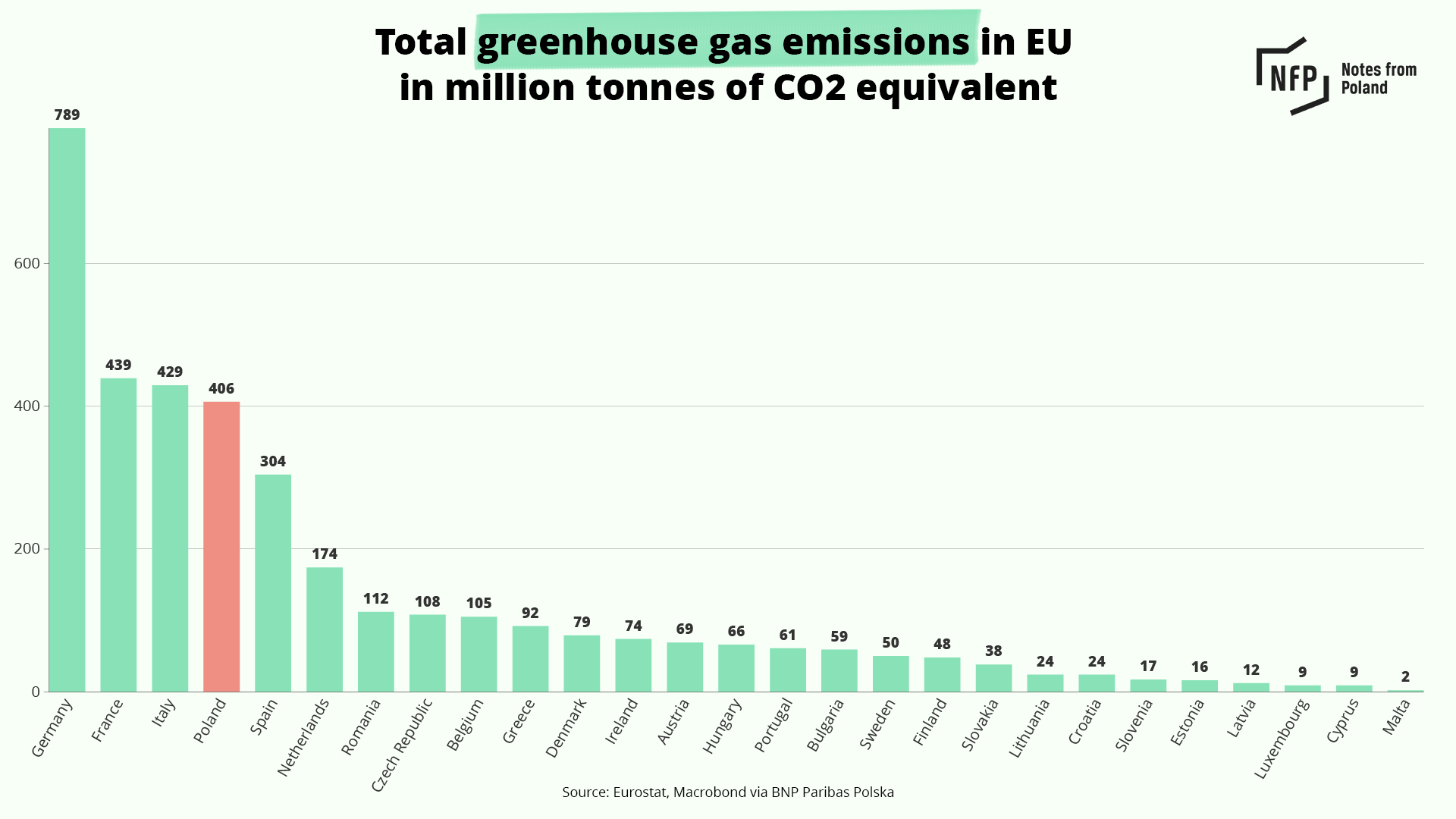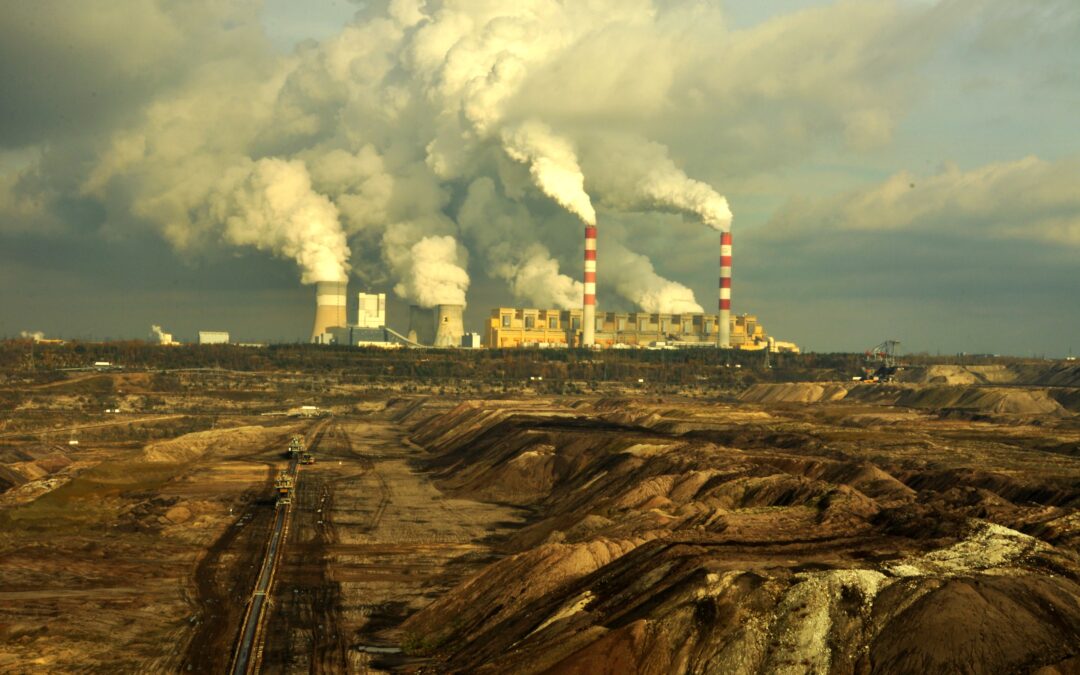Poland is the EU’s second-largest emitter of greenhouse gases in relation to the size of its economy, a new report shows. In terms of emissions per capita, however, Poland is fifth highest in the bloc.
The report, published by BNP Paribas Polska, a bank, shows that in 2022 Poland emitted 715 tonnes of CO2 equivalent – a metric measure used to compare emissions from various greenhouse gases – per million euros of its gross domestic product (GDP), a measure of economic activity.
That figure was 2.7 times the EU average (263 tonnes) and was behind only Bulgaria (1059 tonnes). At the other end of the scale, Sweden (94 tonnes), Luxembourg (145 tonnes) and Malta (158 tonnes) had the lowest figures.

In relation to population, Poland emitted 11 tonnes of CO2 equivalent per capita in 2022 compared to an EU-wide figure of 8.1 tonnes.
The only countries ahead of Poland were Ireland (14.4 tonnes), Luxembourg (14.3 tonnes), Denmark (13.5 tonnes) and Estonia (11.5 tonnes). The lowest emitters per person were Malta (4.4 tonnes), Sweden (4.7 tonnes) and Portugal (5.8 tonnes).
In terms of total emissions, Poland is fourth in the EU, with 406 million tonnes of CO2 equivalent in 2022. Germany (789 million tonnes) was the largest emitter, followed by France (439 million) and Italy (429 million).

BNP Paribas’s analysts also noted that, whereas other EU states have seen a decrease in emissions, Poland’s have remained consistently high over the last dozen or so years.
“The high carbon intensity is the result of a mix of rapid economic growth and the slow energy transition of our country,” they wrote. “Poland’s energy sector is still mainly based on burning coal, which is now becoming a rarity in the EU.”
Last year, Poland generated around two thirds of its electricity from coal, which was by far the highest proportion in the EU. In 2022, Poland was ranked as the least green country in the bloc in an EU-funded study.
Renewables generated a record 26% of Poland’s electricity in 2023, up from 19% the previous year.
However, coal continued to produce most of the country’s power, accounting for almost two thirds of the energy mix https://t.co/JQqfMkOK4I
— Notes from Poland 🇵🇱 (@notesfrompoland) January 3, 2024
In its report, BNP Paribas stressed that “greater investment in [renewables] and appropriate use of EU funds for the energy transition will be extremely important for maintaining the competitiveness of the Polish economy as a whole”.
Renewables last year generated around 26% of Poland’s electricity, up from around 9% in 2015.
The bank’s analysts added, however, that Poland’s household emissions are lower than the EU average, despite the country’s relatively cold climate and prevalent use of coal for heating homes. This, they note, is “due to the relatively low emissions associated with the use of vehicles by households”.


Notes from Poland is run by a small editorial team and published by an independent, non-profit foundation that is funded through donations from our readers. We cannot do what we do without your support.
Main image credit: Greenpeace Polska/Flickr (under CC BY-ND 2.0)

Alicja Ptak is deputy editor-in-chief of Notes from Poland and a multimedia journalist. She has written for Clean Energy Wire and The Times, and she hosts her own podcast, The Warsaw Wire, on Poland’s economy and energy sector. She previously worked for Reuters.



















